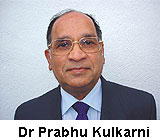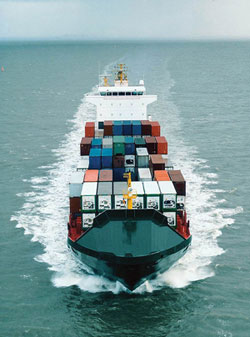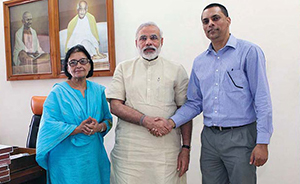A paradigm shift
Dr Prabhu Kulkarni explains the changing trade relationship between India and EU
 The largest liberal democracy in the world with 1.2 billion inhabitants celebrated its 63 independence day in August 2010, around the same time as the EU, the largest democratic trading block in the world, was celebrating its 53 anniversary. The EU, comprising 27 diverse economies, is also the largest trading partner and FDI investor in India.
The largest liberal democracy in the world with 1.2 billion inhabitants celebrated its 63 independence day in August 2010, around the same time as the EU, the largest democratic trading block in the world, was celebrating its 53 anniversary. The EU, comprising 27 diverse economies, is also the largest trading partner and FDI investor in India.
In the decade following the liberalisation of the Indian economy in 1991, the country's GDP grew by 5% to 6% and since then by about 7% to 8% annually upto 2009. Now it is expected to increase by 8% to 10% annually.
The global banking and financial crises of 2008 and the recession that followed in North America and Europe have left India relatively unscathed. India, like China, was among the handful of G-20 countries that did not go into recession (two consecutive months of negative GDP growths). India maintained its second highest GDP growth rate in the world throughout this period. From 2004 to 2009 Indian GDP increased from about $460 billion dollars to over $1.2 trillion. It is expected to reach about $ 4 trillion by 2015, making it the third largest economy in the world after the US and China.
Per capita GDP of India doubled from 2003 to 2007 and is expected to increase further, by three fold, in 2015. This has resulted in an unprecedented growth in the purchasing power of the average Indian citizen, which is the driving force of the country's economic growth.
 Over 300 million people are considered as middle class with a high disposable income. This number is likely to increase to about 450 to 500 million by 2015. India took about 200 million people out of abject poverty (earning less than US $ 2 per day) between 2004 and 2009, and these have had some impact on the global food market. These 200 million people, who could barely afford one simple meal a day, are now consuming two or three times more rice, wheat, vegetable oils, lentils and can afford two or three meals a day. Soon they will become consumers for other essential goods. They will become part of the mainstream consumer classes and be drivers of the Indian economy. India plans to bring an additional couple of hundred million people out of abject poverty in the next few years. With new government initiatives in poverty elimination, bridging the urban-rural divide will enhance the Indian economic transformation.
Over 300 million people are considered as middle class with a high disposable income. This number is likely to increase to about 450 to 500 million by 2015. India took about 200 million people out of abject poverty (earning less than US $ 2 per day) between 2004 and 2009, and these have had some impact on the global food market. These 200 million people, who could barely afford one simple meal a day, are now consuming two or three times more rice, wheat, vegetable oils, lentils and can afford two or three meals a day. Soon they will become consumers for other essential goods. They will become part of the mainstream consumer classes and be drivers of the Indian economy. India plans to bring an additional couple of hundred million people out of abject poverty in the next few years. With new government initiatives in poverty elimination, bridging the urban-rural divide will enhance the Indian economic transformation.
Together, these hundreds of millions of people are consuming all types of commodities and products at an astonishing rate. New mobile phone subscriptions are increasing by about 15-17 million per month, and sales of cars, motorcycles, scooters and bicycles are increasing by about 30% to 35% annually. Millions of radios, TVs, washing machines, refrigerators and other consumer electronics adorn the new houses and apartments all over India. The major difference is that unlike some of the EU countries; these goods are manufactured in India, thus creating millions ofnewjobs in manufacturing and service industries. The annual growth in the engineering industry was about13%to 15%during the last few years.
In July 2010, an analysis by India's statistics agency said that the strong industrial and mining output helped boost the growth rate. Industrial output rose more than 12% while mining and quarrying jumped nearly 9%.
The service industries sector accounts for 55% of India's economy, while industry makes up around 25% of output. Services including hotels and banking also did well, with outputupnearly 10%.










Comments.